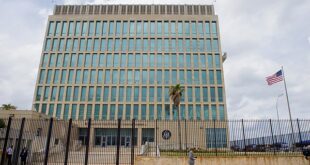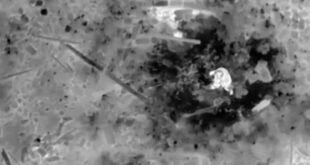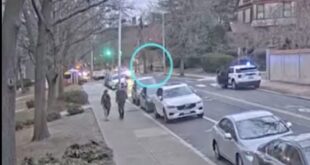COMMENTARY by Susan Katz Keating
The case of Tamerlan Tsarnaev is a grim lesson in what happens when the security safety net has holes.
Long before the smoke cleared on Boylston Street in April 2013, long before the manhunt in Watertown gripped the nation, warnings had come in. They arrived not from shadowy informants nor vague intelligence chatter, but from a nation whose interests often diverge from ours: Russia.
In March 2011, the FSB, Russia’s principal security service and successor to the KGB, sent the FBI a detailed, page-and-a-quarter letter about a young man named Tamerlan Tsarnaev. The Russians spelled it out: this Massachusetts-based man of Chechen descent had ties to violent radical Islamists. The FSB gave names, numbers, addresses. They included the identity of one of Tamerlan’s associates, who later was killed fighting alongside jihadists in Daghestan.
The FBI interviewed Tsarnaev. They ran his name through their system. They found no links to terrorism. In June, with no solid trail to pursue, agents closed their investigation.
Six months later, the Russians sent a second warning – this time to the CIA. The message was nearly identical, reiterating the concerns. The CIA passed it along. Tsarnaev’s name went into the database for TECS, the Treasury Enforcement Communications System.
A red flag was entered. “Subject is of interest to the Boston JTTF,” said a TECS memo. “If subject is encountered, contact FBI Special Agent [redacted]. Conduct a full CTR Secondary” – interview and search the subject – “if encountered entering or exiting the U.S.”
On January 21, 2012, Tamerlan Tsarnaev walked into JFK airport and boarded a flight to Moscow. He wasn’t stopped. He wasn’t questioned. Why? Because someone had typed his name into the TECS system with an extra “y.” Tsarnayev instead of Tsarnaev. A typo. One letter off.
It’s the kind of mistake that happens every day. In this case, it meant a man flagged for possible terror connections walked freely onto a plane headed for a region notorious for jihadist training camps. In Daghestan, Tsarnaev disappeared for six months.
A Violent, Unstable Region
It was a bad sign.
In the aftermath of the Boston bombings, one expert noted that the Tsarnaev brothers had attended school in that remote North Caucasus region.
“The fact is that today Daghestan is the most unstable, the most violent, the most radicalized territory in the whole of the Russian Federation,” Aslan Doukaev, director of RFE/RL’s North Caucasus Service, told a colleague in a 2013 interview.
According to U.S. officials, Tsarnaev spent his time there being trained in terrorist tactics.
When he returned to the U.S. in July 2012, the misspelled entry still rendered him invisible to the system. Again, no red flags went up. And again, no one pulled him aside.
These aren’t just missed signals—they’re blinking red lights that were ignored or misread.
A War Zone
On April 15, 2013, the unthinkable happened.
It was Patriots’ Day, and the 117th Boston Marathon was in full stride. Runners from around the world pushed toward the finish line, cheered on by thousands of spectators. It was a quintessential American scene—until it turned into a war zone.
At 2:49 p.m., twin blasts shattered the celebration. Within seconds, three innocent lives were lost, and more than 500 people were maimed or injured in the deadliest terrorist attack on U.S. soil since 9/11.
Tamerlan Tsarnaev and his younger brother, Dzhokhar, had placed two pressure cooker bombs near the finish line on Boylston Street. The sidewalk turned into a scene of carnage. Audio from that day is heart wrenching.
The attacks triggered an unprecedented manhunt. For three days, Boston and its surrounding areas braced as federal and local law enforcement scoured the city. The breakthrough came on April 18, when the FBI released surveillance images of the suspects. Within hours, the city plunged into chaos once again.
That night, the Tsarnaev brothers launched another wave of violence. They murdered MIT Police Officer Sean Collier in cold blood, attempting to steal his service weapon. Next, they carjacked a vehicle, kidnapped the driver, and robbed him of $800. The driver’s harrowing escape provided critical information that helped authorities zero in.
The final confrontation unfolded in Watertown. Explosives lit up the suburban night as the brothers hurled homemade devices at police. In the melee, Dzhokhar Tsarnaev tried to mow down officers with his vehicle – running over his own brother in the process. Tamerlan Tsarnaev died from his injuries.
Dzhokhar escaped, but not for long. After an intense search that brought Boston to a standstill, he was found the next day, bleeding and hiding inside a boat in a backyard.
He was captured, and was charged with use of a weapon of mass destruction resulting in death and conspiracy, along with 29 additional terrorism-related charges.
At trial, a jury found Dzhokhar guilty on all 30 counts in the indictment. In June 2015, he was sentenced to death.
“You Should Go Home”
As a journalist, I covered the Boston bombings and the hunt for the perpetrators. I followed the story as it unfolded. I wrote about the American woman, Katherine Russell, who was married to Tamerlan. I went to Boston for Dzhokhar’s trial.
In pursuing those stories, I encountered members of the Chechen and Daghestani diaspora. Some of them were horrified at what the Tsarnaev brothers had done. Others kept their views to themselves, but were hostile to a journalist asking questions.
In a Boston neighborhood, I had one of the most memorable encounters of my career. I don’t say this lightly. As a journalist, I have been detained in Belgrade; held at gunpoint in Northern Ireland; directly threatened on the streets of London, and more. In Boston, there was something uniquely unforgettable about a foreign-accented voice telling me, here on American soil: “You should go home.” And being surrounded by menacing men who didn’t want me to delve into anything – and who used intimidation as a native language. I have often wondered, what were they so aggressively protecting? Were they, too, hiding in plain sight?
Tamerlan Tsarnaev wanted to hurt my home, and that of my fellow Americans. He hit hard.
In the world of counterterrorism, we like to believe there’s a net. A system. A watchlist. We believe that when a known threat enters that system, the alarms will go off. But the case of Tamerlan Tsarnaev is a grim lesson in what happens when the net has holes, and when those tasked with keeping us safe lose sight of the threats that are hiding in plain sight.
The trail was there. The warnings were real. And the system failed – by a keystroke.
Susan Katz Keating is the publisher and editor in chief at Soldier of Fortune.
 Soldier of Fortune Magazine The Journal of Professional Adventurers
Soldier of Fortune Magazine The Journal of Professional Adventurers






